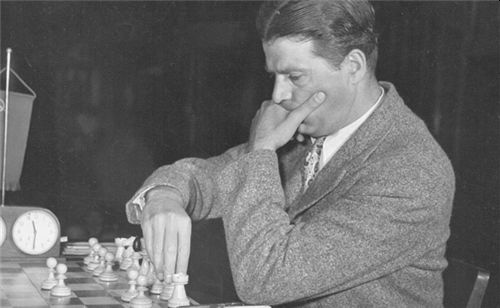
May 5 is the birthday of Andor (Andre) Lilienthal who lived a very long and eventful life. He was one of the 27 original grandmasters awarded the title by FIDE in 1950.
His mother was a singer and father a racer, so the family traveled a lot. The future grandmaster was born in 1911 in Moscow, then the Russian Empire. In 1913, his mother with kids Andor and Margaret returned to Hungary. The family lived very poorly and Andor got used to working from the very childhood. At the age of 15, Andor left school to get a profession of a tailor but did not find a permanent job.
At 16, he went into chess. Just three years later Andor scored 9 out of 12 in the international tournament in Czech Stubnianske Teplice (1930), ahead of Pirc and Flohr. His chess university was a famous Paris Café de la Regence in Rue de Rivoli where playing for money was normal practice. “Alekhine also was a customer of that café,” – recalled Andor. “One day they told him about me. They said that there was a boy who perfectly played simple games. He offered me to play four games, of course with no stake. To spectators’ surprise, he only managed to defeat me in the 4th game, whereas the three first games were won by me. Alekhine demanded revenge but I refused flatly: “I want to save this result for the rest of my life”, I said. Though Alekhine was a nervous and quick-tempered person, this time he saw my point and burst out laughing.”
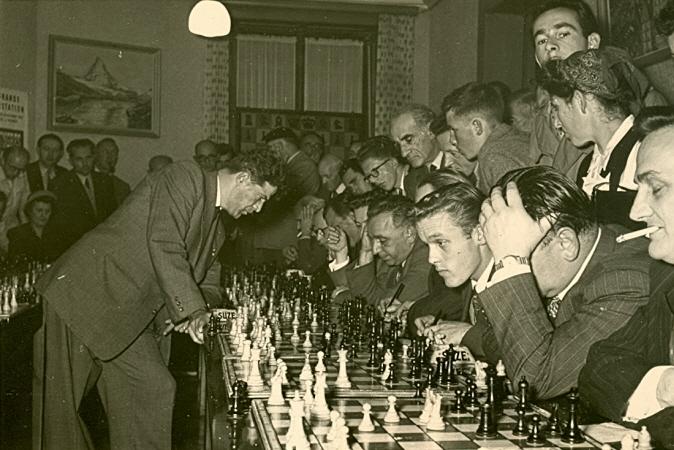
Soon Lilienthal stood neck and neck with Alekhine, sharing the first place in the prestigious Hastings tournament in 1933. A year later, he won the Ujpest tournament ahead of Pirc, Flohr, Gruenfeld, and other top players of that time. In Hastings 1935, Lilienthal shared 5-6 places with Botvinnik, but the tournament will be remembered for his sensational victory over Capablanca in just 26 moves with a queen sacrifice.
Lilienthal - Capablanca, 1935
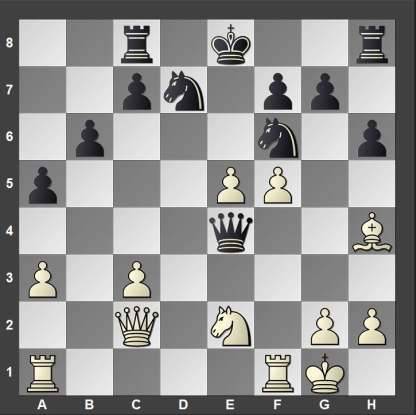
20.exf6!!
“The motif of the queen sacrifice is to exploit the poor position of the enemy king and Black's lag in development. A decisive factor in the attack is the opening of the e-file. In contrast to many similar sacrifices, the black king receives its first check only four moves later,” – Lilienthal.
20...Qxc2 21.fxg7 Rg8 22.Nd4
With a deadly threat Rae1+.
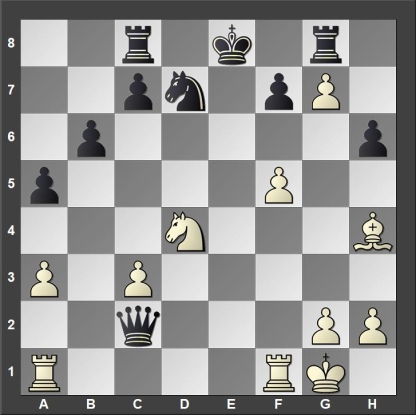
22...Qe4 23.Rae1 Nc5 24.Rxe4+ Nxe4 25.Re1 Rxg7 26.Rxe4+ Kd7
“Without waiting for my reply, Capablanca smiled and held out his hand, congratulating me on my win. I couldn't conceal that I was happy,” – Lilienthal.
Just a handful of players scored well against Capablanca. Along with Spielmann, with whom Lilienthal shares the birthday, Andor held his own; only Keres had a positive score against the Cuban world champion. During his career, Lilienthal played with almost all world chess champions and defeated Lasker, Capablanca, Alekhine, Euwe, Botvinnik, Smyslov, women's world champion Vera Menchik.
In the 1930s, Lilienthal played in three Chess Olympiads for the Hungarian team, with the total score amounting to an impressive 75.51%. In 1935, during the tournament in Moscow, Andor fell in love with a lady who came to watch the competition; he decided to stay in the Soviet Union. Evgeniya became his wife and in 1939 Lilienthal got Soviet citizenship. After her death, he married two more times connecting his life with Lyudmila (1976) and Olga (1987).
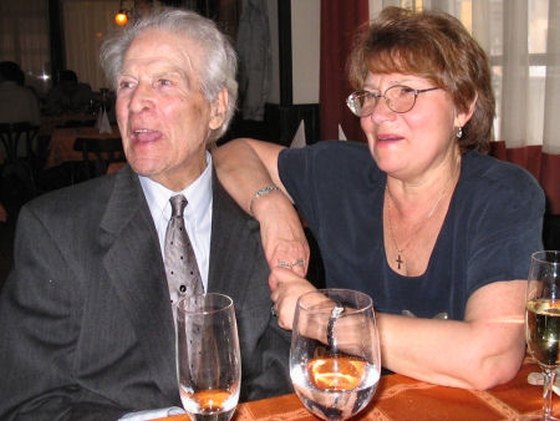
Lilienthal’s major results came during the Soviet period of his life. In 1940, Andor won the Moscow Championship and tied for first in the USSR Championship ahead of Smyslov, Keres, Boleslavsky, and Botvinnik. In that event Lilienthal won a great game against Mikhail Botvinnik, proving that when it comes to positional play, he’s in his element too.
Lilienthal - Botvinnik, 1940 (commentary by Andor Lilienthal)
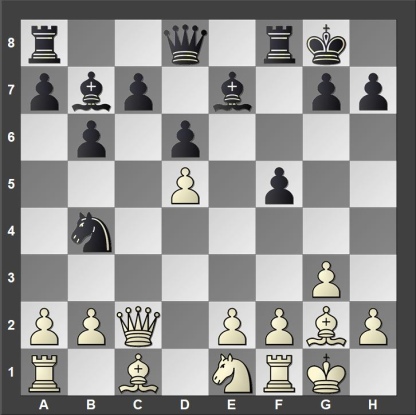
14.Qd2!
This “unnatural” move was obviously underestimated by Botvinnik.
14…a5
According to Botvinnik, it was necessary to go for 14…c5, although after 15.dxc6 Nxc616.Nd3 Black’s position remains difficult.
15.a3 Na6 16.b4! Now the a6 knight plays a miserable role. 16…Bf6 17.Bb2 Qd7 18.Bxf6 Rxf6 19.Nd3
19…a4.
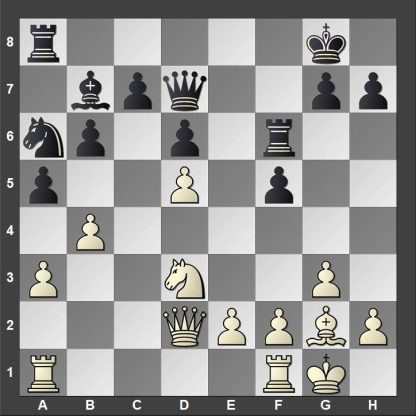
20.bxa5 was a threat, and 19…axb4 was lost: 20.axb4 Qb5 21.Nf4 (21.Ra3 is also not bad, “tripling” the heavy pieces on the “a” file) 21…Qxb4 22.Qxb4 Nxb4 23.Rxa8+Bxa8 24.Ra1 Rf8 25.Ra4! c5. Here I saw that Black is getting mated in a funny way: 26.dxc6 Nxc6 27.Bd5+ Kh8 28.Ng6+!
20.Rac1 Qf7 21.Nf4. The knight took the dominating position. The weaknesses on c7 and e6 squares cannot be protected well and Black’s position is strategically lost.
21…Bc8 22.Rc3 Bd7 23.Rfc1 h6 24.h4 Ra7 25.h5! Now the knight has fortified his position on f4. 25…Ra8.
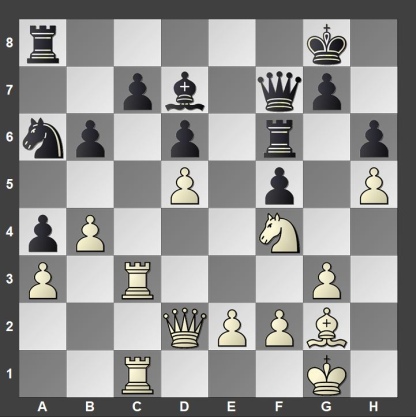
26.Re3! Positional 26.e3 and 27.Bf1 promises less due to b6-b5.
26…Kh7 27.Rcc3 Rb8 28.Qd3 Ra8 29.Ng6 Rxg6. Forced in a view of Re7 threat. 30.hxg6+ Kxg6
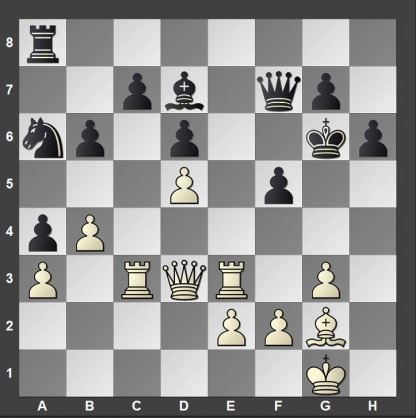
31.Re6+
Spectacular, but perhaps not the best move. Immediate 31.g4 was simpler, causing massive simplifications (31…Kh7 32.gxf5 Bxf5 33.Be4).
White is completely winning anyway and Lilienthal convincingly converted his advantage:
31…Kh7 32.g4 c5 33.b5 Nc7 34.gxf5 Nxb5 35.f6+ Kg8 36.Rc4 Re8 37.Rg4 g5 38.Rxe8+ Bxe8 39.Re4 Kf8 40.Re7 Qg6. 41.Be4 Qh5 42.Bf3 Qg6 43.Rxe8+ 1-0
After the championship, Lilienthal, according to Botvinnik, “received the plaudits of all. His style of play was unique. As a rule, modest play at the start of the game, but then he would find his original plans for the middlegame, where he would create more problems for his opponent. I ‘suffered’ all of that myself. I saved myself more than once, but I also had to endure two heavy losses – in Moscow 1940, and 1941.”
In 1950, Lilienthal played his only Candidates Tournament. The competition in Budapest was won Bronstein and Boleslavsky, Lilienthal finished 8th. His playing prime was behind and he turned to coaching, helping Tigran Petrosian from 1951 until 1960 and being second to his good friend Vasily Smyslov in his world championship matches against Botvinnik.
“As a chessplayer, Andre stands out for his amazing intuition and feeling for the position. He is equally dangerous in positional play, as he is in the combinative. His victories over Capablanca and Botvinnik make a deep artistic impression.” Smyslov said.
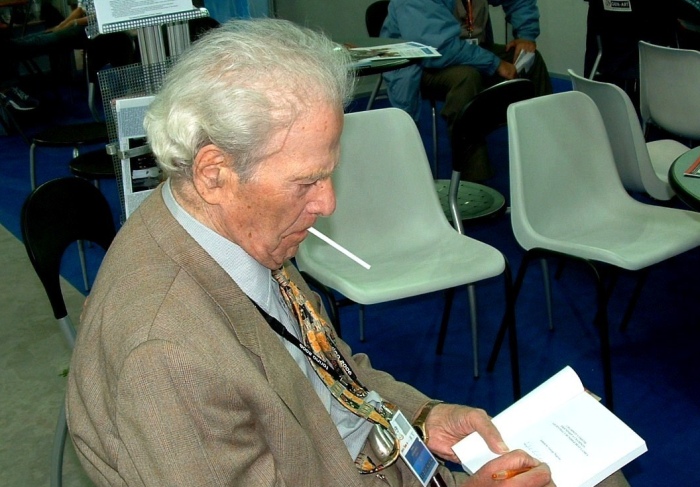
In 1976, at the request of his mother, Andor returned to Budapest and lived there since. Almost all chess kings of the XX century visited his apartment in the Hungarian capital, but Bobby Fischer was the only one who lived there for a month. It happened when he was hiding from the US authorities after the 1992 match with Spassky in Yugoslavia. “He could eat half a pot of Olga’s borsch and loved caviar,” – recalled Andor in one of the interviews. They were friends. The flighty American genius approved only three chess players who could carry his coffin at the funeral: Andor Lilienthal, Lajos Portisch, and Boris Spassky.
Lilienthal remained actively involved in chess into his ninth decade. He died in 2010 at the age of 99. The oldest living GM Yuri Averbakh (98 at the moment), is Lilienthal's disciple in this regard; we wish him to beat his predecessor's record of chess longevity!


